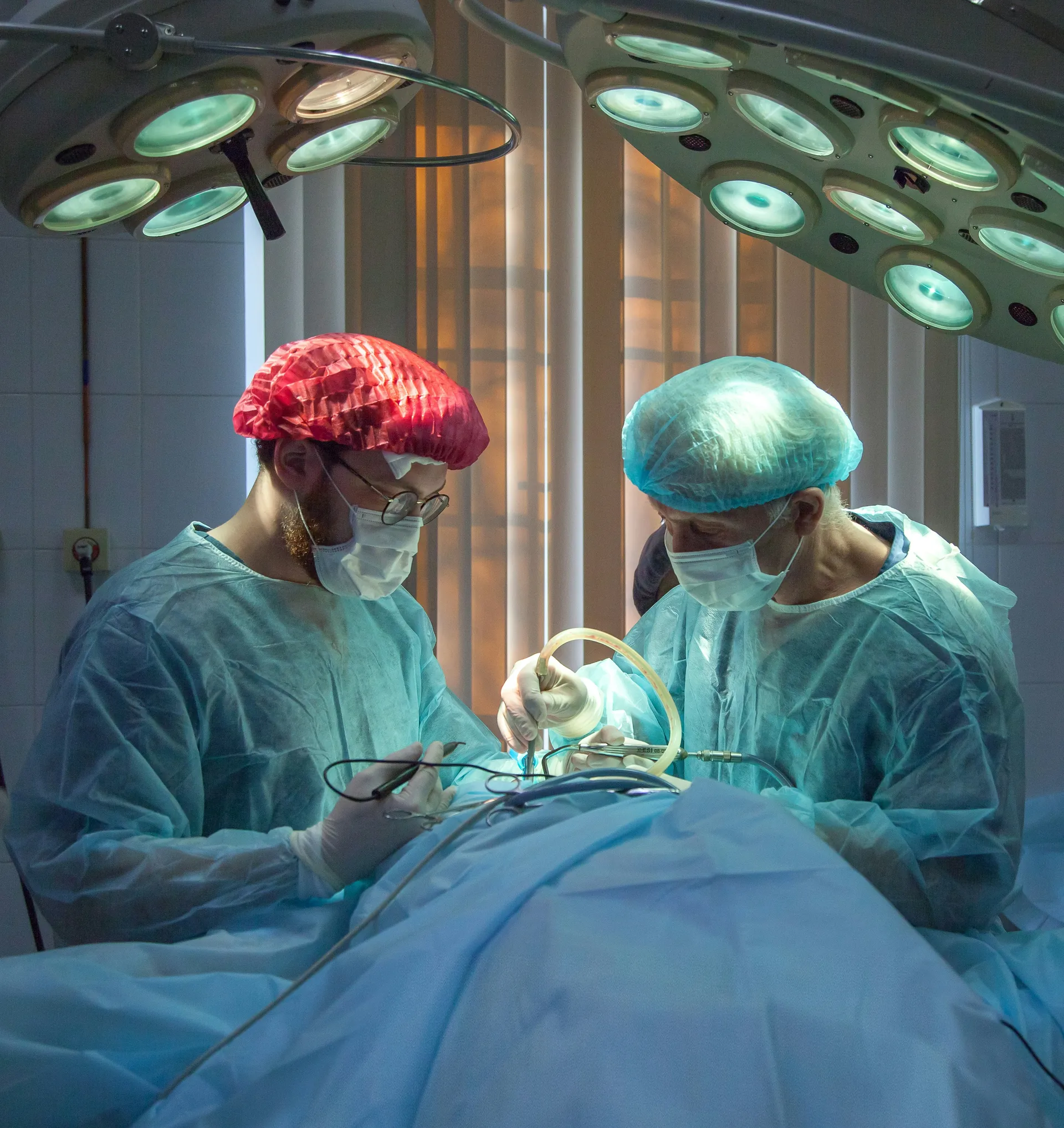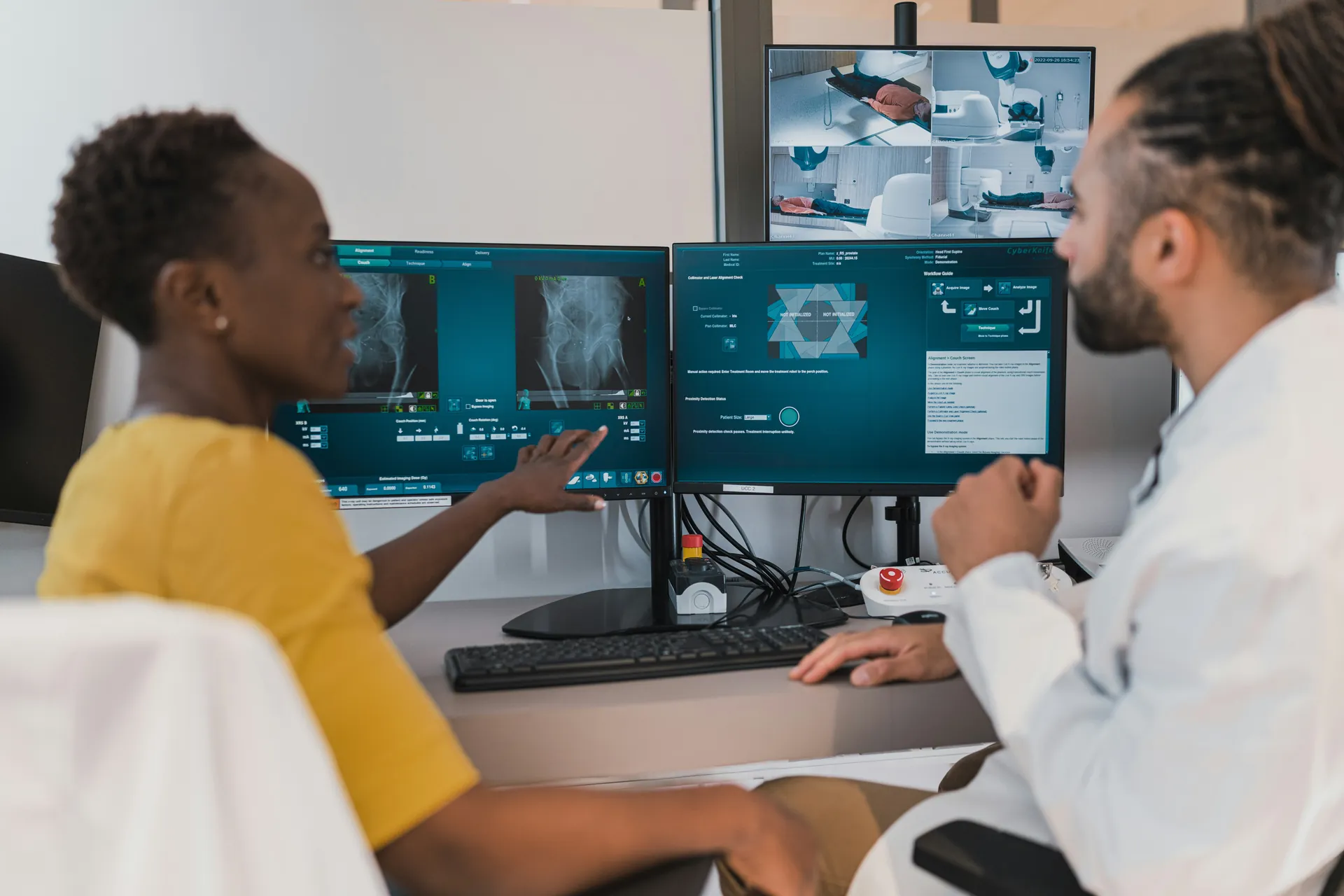Technological medicine stands at the forefront of the healthcare and innovation nexus, fundamentally altering our approach to diagnosis, treatment, and patient care. As you delve into the dynamic world of medical technologies, you'll see the transformative impact of artificial intelligence, robotics, and genetic engineering on healthcare delivery and patient outcomes. From AI-powered diagnostic tools to precision medicine designed for your unique genetic profile, these breakthroughs are not just changing the medical landscape—they're offering renewed hope to patients across the globe.
In this article, we'll delve into how technological medicine is revolutionizing clinical decision-making, optimizing healthcare workflows, and paving the way for more effective, personalized, and cost-efficient medical care.
The Integration of Robotics in Surgical Procedures
The field of surgery has undergone a remarkable transformation with the integration of robotics, ushering in a new era of precision and innovation in medical care. As you explore the cutting-edge advancements in surgical technology, you'll discover how robotic systems are revolutionizing the operating room and expanding the possibilities for patient treatment.
Robotic-Assisted Surgery
Robotic-assisted surgery represents a significant leap forward in surgical techniques, offering surgeons enhanced dexterity, visualization, and control. The da Vinci Surgical System, for instance, has become a cornerstone of modern surgical practice, enabling minimally invasive procedures across various specialties. With its highly dexterous arms and miniaturized instruments, this technology allows for more precise movements and reduces tremors, resulting in smaller incisions, less blood loss, and faster recovery times for patients.
The integration of artificial intelligence (AI) and machine learning (ML) in robotic surgery is further enhancing surgical decision-making. These advanced technologies aid in recognizing complex anatomical structures and can provide real-time guidance to surgeons, improving overall surgical accuracy and safety.
Telesurgery and Remote Operations
One of the most exciting developments in robotic surgery is the emergence of telesurgery, which allows skilled surgeons to operate on patients from great distances. This groundbreaking technology has the potential to bring specialized surgical expertise to underserved areas, overcoming geographical barriers and improving access to high-quality medical care.
The successful demonstration of remote robotic telesurgery, such as the trial conducted by clinician-scientists at the National University Hospital in Singapore, showcases the incredible potential of this technology. In this trial, surgeons in Singapore remotely performed complex gastrectomy surgeries on an artificial stomach located over 5,000 kilometers away in Japan.
This achievement highlights the possibility of providing specialized surgical care during emergencies or global crises, even in hard-to-reach locations.
As telesurgery continues to evolve, researchers are addressing challenges such as minimizing latency in data transmission and ensuring the security of remote connections. The development of 5G networks and advanced haptic feedback systems promises to further enhance the precision and responsiveness of remote surgical procedures, bringing us closer to a future where distance is no longer a barrier to receiving expert surgical care.
Breakthroughs in Genetic Engineering and Biotechnology
As you delve deeper into the world of technological medicine, you'll discover that genetic engineering and biotechnology are at the forefront of medical innovation. These fields are revolutionizing our approach to treating diseases and developing personalized therapies that promise to transform healthcare as we know it.
CRISPR and Gene Editing
CRISPR-Cas9 technology has emerged as a game-changer in genetic engineering, offering unprecedented precision in modifying DNA sequences. This powerful tool is being applied across various medical domains, from creating disease models to developing potential cures for genetic disorders.
In cancer research, CRISPR has enabled rapid screening to identify and validate potential drug targets, allowing for more precise disease modeling and the development of innovative cancer therapeutics. For instance, researchers have used CRISPR to engineer different KRAS variants in mice, uncovering significant differences in tumor initiation and progression across various tissues.
This approach has revealed mutation-specific therapeutic vulnerabilities, highlighting the importance of studying individual cancer driver mutants to develop effective, targeted treatment strategies.
Beyond oncology, CRISPR is showing promise in treating other conditions. In cardiovascular medicine, base editing techniques have been used to introduce precise loss-of-function mutations in the PCSK9 gene, resulting in long-term reduction of PCSK9 protein and low LDL levels in animal models. This approach has shown superior effects compared to currently approved drugs, underscoring CRISPR's potential in treating cardiovascular diseases.
Personalized Medicine and Pharmacogenomics
Pharmacogenomics, a cornerstone of personalized medicine, is revolutionizing how we approach drug therapy. By analyzing an individual's genetic makeup, healthcare providers can now tailor medications and dosages to optimize treatment efficacy while minimizing adverse reactions.
This field has expanded beyond traditional pharmacogenetics, which focused on single gene-drug pairs, to encompass all "-omics" fields, including proteomics, transcriptomics, and metabolomics. This holistic approach allows for a more comprehensive understanding of how an individual's genetic profile influences their response to various treatments.
In oncology, pharmacogenomics is driving the development of targeted therapies. By identifying specific genetic markers in tumors, oncologists can select treatments that are most likely to be effective for each patient. This approach not only improves treatment outcomes but also reduces the likelihood of patients experiencing unnecessary side effects from ineffective therapies.
The impact of pharmacogenomics extends beyond cancer treatment. In mental health, for example, genetic testing can help predict how patients will respond to different antidepressants or antipsychotics, potentially reducing the trial-and-error process often associated with finding the right medication.
This application of personalized medicine has the potential to significantly improve patient outcomes and quality of life in psychiatric care.
As we continue to advance our understanding of the human genome and its role in health and disease, the possibilities for personalized medicine and pharmacogenomics seem limitless. However, challenges remain in translating these scientific breakthroughs into widespread clinical practice, including issues of cost, accessibility, and the need for robust regulatory frameworks to ensure ethical use of genetic data.
Revolutionizing Diagnostics with Artificial Intelligence
As we delve deeper into the era of technological medicine, artificial intelligence (AI) emerges as a pivotal force in healthcare, especially within diagnostics. Utilizing machine learning and sophisticated algorithms, AI is fundamentally changing our approach to disease detection, analysis, and patient care.
AI in Imaging and Diagnostics
The application of AI in medical imaging has ushered in significant improvements in diagnostic precision and efficiency. AI algorithms now possess the ability to dissect complex medical images with an accuracy that often exceeds human capabilities. For example, in radiology, AI-driven systems are capable of identifying minor abnormalities in mammograms, CT scans, and MRIs that might elude even the most skilled radiologists.
One of the most impactful aspects of AI in diagnostics is its proficiency in processing large volumes of data swiftly. This enables the discovery of patterns and correlations that might not be immediately evident to humans.
In the field of oncology, AI algorithms play an important role in analyzing genomic data, aiding in the identification of specific cancer mutations and customizing treatment plans accordingly.
Furthermore, AI significantly improves the speed and accuracy of disease prediction. By evaluating a comprehensive set of patient data, including medical history, genetic profiles, and lifestyle choices, AI models are adept at forecasting the risk of developing certain diseases. This predictive power is immensely beneficial in managing chronic conditions and formulating preventive care strategies.
Wearable Health Technology
The fusion of AI with wearable technology is forging new pathways in continuous health monitoring and personalized medicine. Wearables, equipped with advanced sensors and AI algorithms, can now monitor a broad spectrum of physiological data in real-time.
These advanced wearables extend beyond basic fitness tracking to include monitoring of vital health indicators such as heart rate variability, blood oxygen levels, and signs of atrial fibrillation. For example, smartwatches with ECG features can identify irregular heart rhythms, potentially signaling serious cardiac issues before they escalate.
In managing chronic diseases, wearable technology is making remarkable advancements. Continuous glucose monitors (CGMs) for diabetes management are a prime example, using AI to analyze glucose data in real-time, forecast trends, and even synchronize with insulin pumps to regulate blood sugar levels efficiently.
The horizon for wearable health technology is even broader and more promising. Ongoing research into sophisticated biosensors aims to detect molecular changes in the body, such as smart contact lenses that measure glucose levels in tears and e-tattoos capable of monitoring various health parameters through the skin.
As these technologies advance, they hold the potential to make high-quality diagnostics more widely available, particularly in areas with scarce medical resources. By facilitating early detection and continuous monitoring, AI-powered wearables are not only enhancing individual health outcomes but also contributing to a more effective and cost-efficient healthcare system globally.
Conclusion
As we've delved into, the landscape of healthcare is undergoing a revolution thanks to technological medicine. From AI-powered diagnostics and robotic surgeries to genetic engineering and wearable health tech, these advancements herald a new era of care that is more precise, personalized, and accessible.
However, the true value of these innovations will be realized through their seamless integration into everyday medical practice. For healthcare professionals, it is imperative to stay abreast of these changes. Embracing continuous learning, collaborating with technology experts, and advocating for the responsible implementation of new technologies are critical steps.
By taking these actions, you will not only improve patient outcomes but also play a pivotal role in shaping the future of medicine. The path towards a technologically advanced healthcare system is still unfolding – your active participation is essential in unlocking its full potential.
FAQ
What are some examples of digital health technologies currently being used in healthcare?
Digital health technologies in healthcare include:
- Telemedicine platforms
- Wearable devices for monitoring vital signs
- Electronic health records (EHRs)
- Mobile health apps
- Artificial intelligence for diagnostics
- Virtual reality for therapy and training
- 3D printing for medical devices
- Robotic surgery systems
- Remote patient monitoring tools
- Blockchain for secure data sharing
How is artificial intelligence (AI) being applied in medical diagnosis and treatment planning?
AI enhances medical diagnosis through image analysis, predictive analytics, and data processing. It improves accuracy in detecting diseases, analyzes patient data for personalized treatment plans, and assists in drug discovery. AI-powered tools aid in early disease detection, treatment optimization, and clinical decision support, revolutionizing healthcare delivery and patient outcomes.
What are the potential benefits and risks of using wearable devices for remote patient monitoring?
Wearable devices for remote patient monitoring offer real-time health data tracking, early detection of issues, and improved chronic disease management. They enhance patient engagement and reduce healthcare costs. However, risks include data privacy concerns, potential inaccuracies, over-reliance on technology, and anxiety from constant monitoring. Proper implementation and patient education are essential.
How is telemedicine changing the way healthcare is delivered, especially in rural or underserved areas?
Telemedicine is revolutionizing healthcare delivery, particularly in rural areas, by providing remote access to specialists, reducing travel burdens, and enabling timely interventions. It improves chronic disease management, enhances emergency care in rural hospitals, and addresses specialist shortages. Telemedicine also increases healthcare accessibility, efficiency, and patient engagement while reducing costs and improving outcomes.



